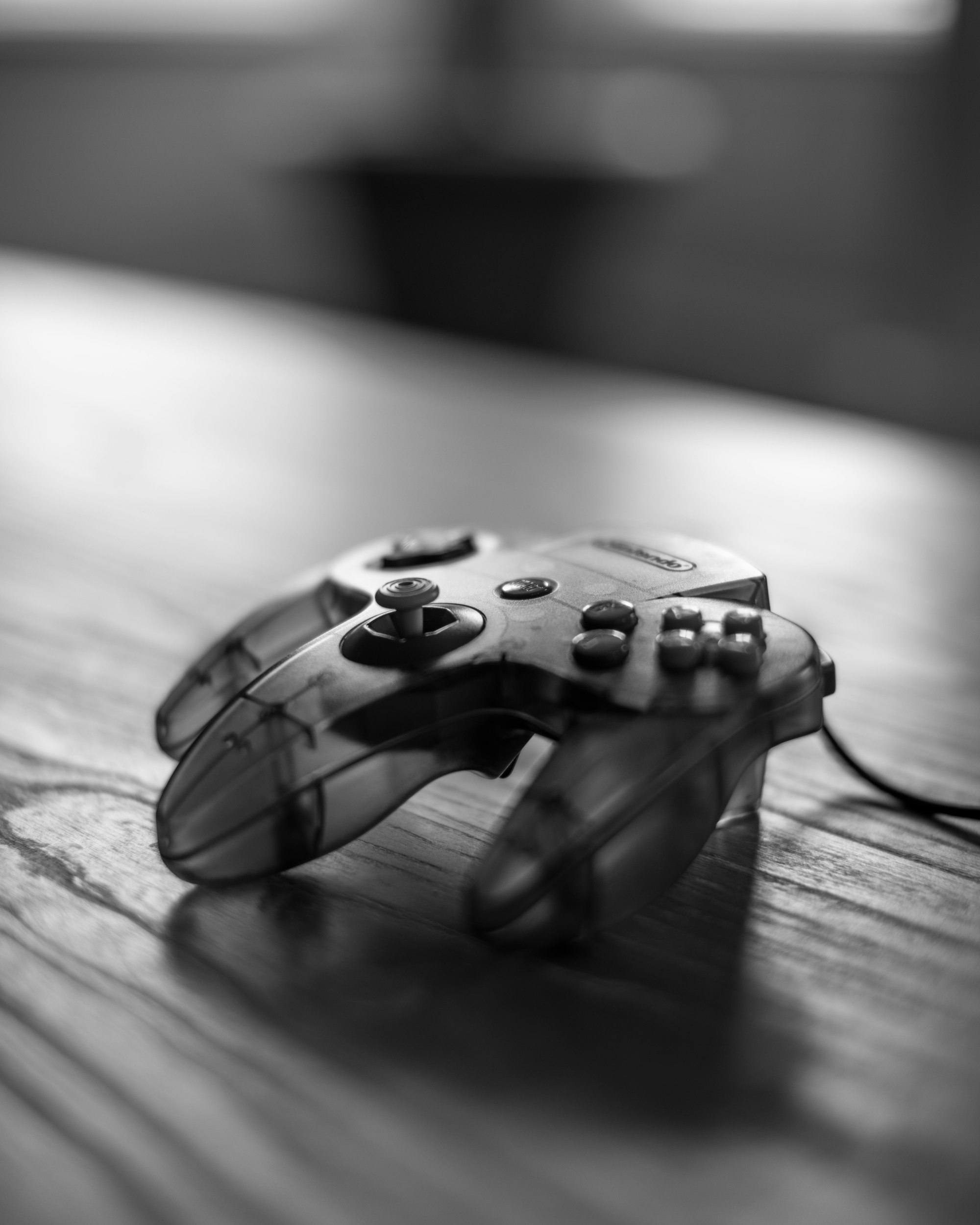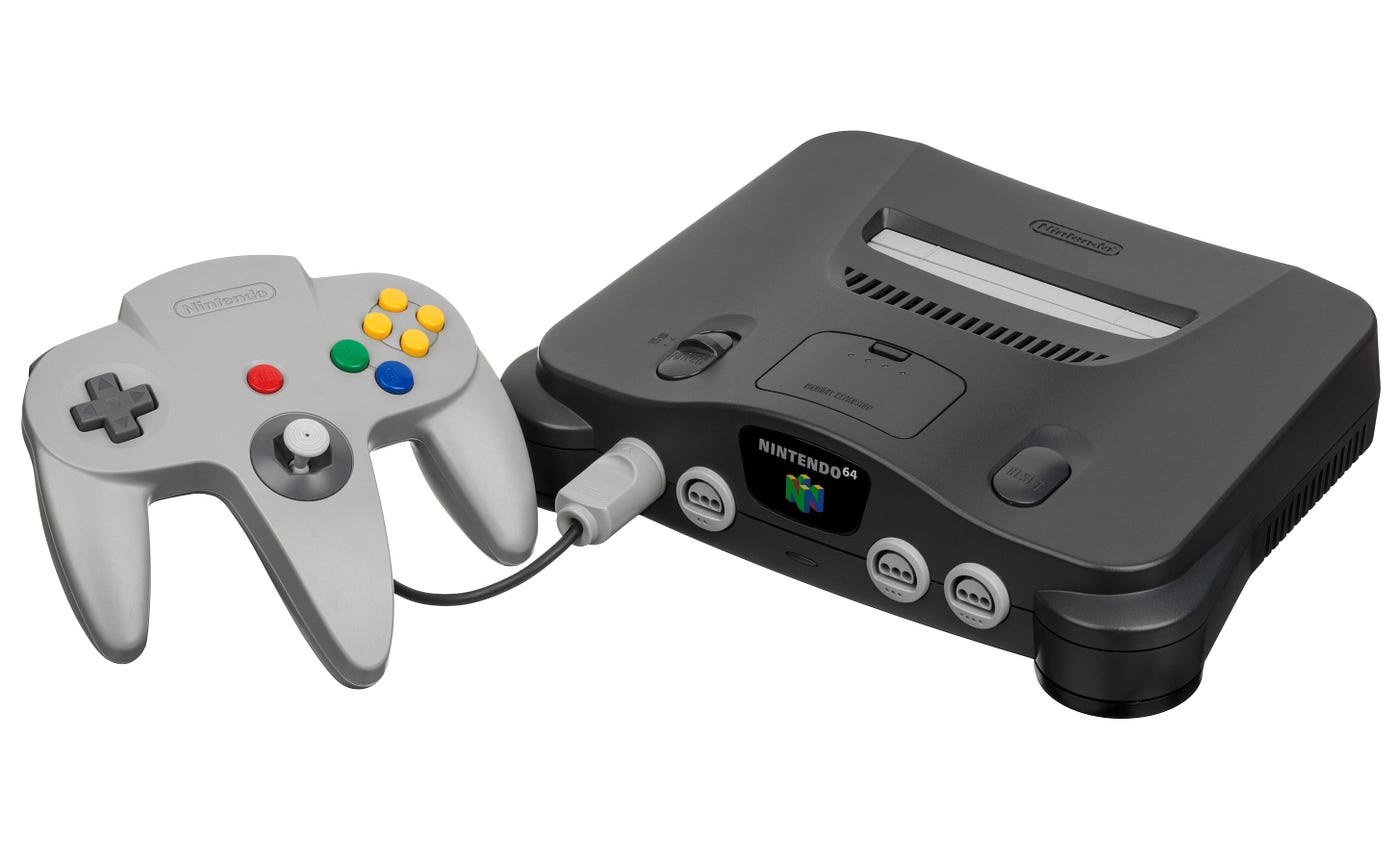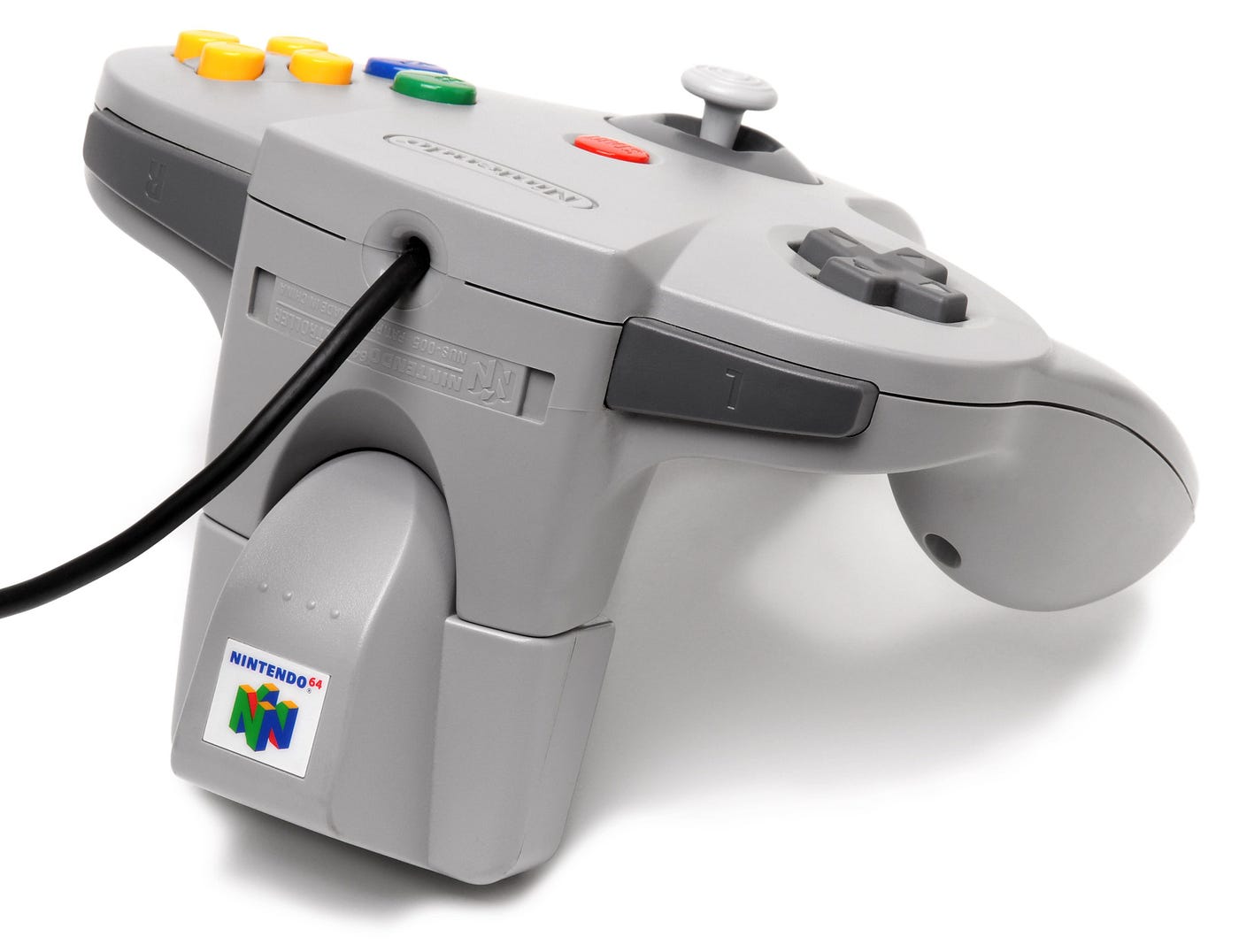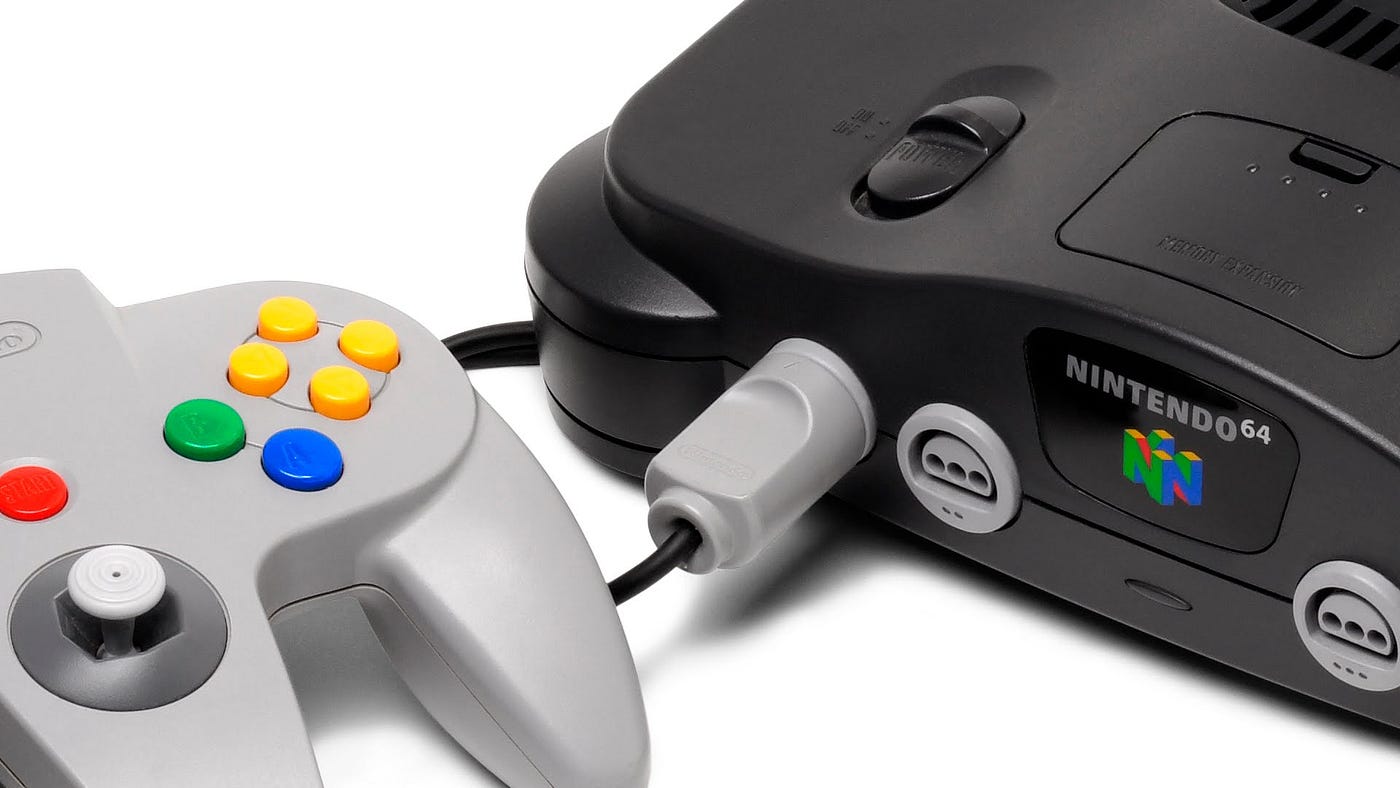Designing the N64 Classic Mini
What could Nintendo’s ideal micro console look like?

When the NES Classic Mini micro console was revealed, fans were undoubtedly excited, but it didn’t take long before people began speculating about a SNES version and how awesome that could be. Of course, Nintendo did end up releasing a SNES Classic Mini (or SNES Classic Edition if you’re in the USA) to much fanfare. The quality of the emulation and the hardware itself (including controllers that feel almost identical to the original versions) were definitely stand-out features of both products; it is partly because the quality was so great that fans began to consider the next enticing possibility: what about an N64 Classic Mini? Would such a product even be possible, and if so, what could we expect from it?
Get N or Get Out
As much as I have great nostalgia for both the NES and SNES (these being the main consoles I grew up with), there’s something incredibly exciting about the prospect of a new, modern version of the Nintendo 64.
One reason for this is because the Nintendo 64 itself felt like such a seachange for video games in general. The way Nintendo put the analogue stick front-and-centre of 3D game design was nothing short of revolutionary, even though there had certainly been other products featuring analogue sticks in the past. Games like Super Mario 64 truly changed the industry in ways that are still being felt today. Even Star Fox 64, which introduced gamers to the Rumble Pak force-feedback accessory, felt bold and innovative — outside of cumbersome racing wheel setups, this was the first time I’d experienced force feedback on a home console game. Prior to that, I had associated the technology with immersive arcade experiences.
Aside from the technical wizardry going on here, it’s fair to say that some of my favourite games of all time found their home on Nintendo 64, including The Legend of Zelda: Majora’s Mask — this was (at least until Breath of the Wild) — my all-time favourite Zelda game. The chance to play it again on a big screen (as opposed to a smaller 3DS screen) with the big, original Nintendo 64 controller design is very appealing to me.
Ungraceful Ageing
Another big reason is that, frankly, Nintendo 64 games haven’t aged well at all. One of the Nintendo 64’s biggest hardware assets — its anti-aliaising capability — was also something of a downfall, in the sense that games that already sported low-resolution textures were made to look even more blurry thanks to the fairly unsophisticated anti-aliaising technique used at the time. During their day, Nintendo 64 games definitely looked great — especially on CRT televisions — but if you try to play a Nintendo 64 on a modern HDTV, you’ll quickly find yourself immersed in a blurry, muddy-looking mess.
This latter point leads me to an important consideration when thinking about our ideal N64 Classic Mini: how would Nintendo deal with this problem? It seems highly unlikely that they would take a large batch of Nintendo 64 games and physically remaster them with higher-resolution textures and improved anti-aliaising. It seems more likely that Nintendo might upscale the original images and perhaps pull back on the heavy anti-aliaising to a degree.
There is certainly hope — and precedent — when it comes to this.
Source: Raven Cart.
The video above, by Raven Cart on YouTube, provides a comparison between Nintendo 64 outputting composite video versus Nintendo 64 with an UltraHDMI mod installed. Here’s a little more information about what the UltraHDMI mod actually does; it’s worth pointing out that the mod doesn’t actually do anything to physically improve textures or resolution, it simply provides the cleanest possible video output for your original Nintendo 64 hardware.
I mention it here though because I think that a Nintendo 64 Classic Mini could both provide the cleanest possible image and upscale the resolution without making radical changes to each individual game. While I’m not a deeply technically-savvy person by any stretch of the imagination, this definitely seems plausible, and it makes sense that Nintendo would need to do something to improve the image quality of Nintendo 64 titles so that they are presentable on modern TVs.
By the way, I’ve said nothing so far about the Nintendo 64 Expansion Pak, which essentially added more RAM to the machine — some games required it, and other games were simply compatible with it (performing better than they would have without it). I think it’s safe to assume that the Nintendo 64 Classic Mini would be powerful enough to run all games as if there were a Expansion Pak installed.
Elephant in the Room
Another element that might be slightly tricky to deal with is the question of storage space. For reference, the SNES Classic Mini had 512MB of flash storage — pretty standard stuff. Then again, SNES game cartridges were tiny by today’s standards, reaching up to 117.75 Mbit, or almost 15MB at most. Nintendo 64 cartridges, on other hand, could weight in at up to 512 Mbit, or around 64MB.
If we take the worst-case scenario and assume that the Nintendo 64 Classic Mini includes up to 20 games of maximum size, we could be talking about requiring at least 1,280MB, not including any overhead required for other stuff (like the OS/UI, for example). If we’re being really conservative, it’s not unrealistic to imagine that a Nintendo 64 Classic Mini might require up to 1.5GB of onboard storage. Certainly, that shouldn’t stretch the bounds of reality at all, but it could make the micro console slightly more expensive.
Three-Pronged Attack
Producing a genuinely great micro console that can emulate Nintendo 64 games and present them well on modern TVs is not a trivial task. But even if Nintendo nails that, it’ll have another problem to deal with: the controller.
There doesn’t seem to be a lot of love for the Nintendo 64 controller. I have to admit though, I always loved it. Its sheer weirdness is part of the charm for me; when I first saw the unconventional design, I remember thinking that I was seeing something from the future — the bold new era of 3D video games would require all those buttons and prongs, right? We were stepping into a new dimension, after all!

In practice, the Nintendo 64 controller was a fascinating missing link of sorts, attempting to bridge the gap between traditional 2D gaming and shiny new 3D gaming requirements. Nintendo advertised three hand positions for the thing:
- The left position (with your left hand on the left prong, and your right hand on the middle prong);
- The centre position (with both hands on the outer prongs);
- The right position (with your left hand on the centre prong, and your right hand on the right prong).
Although somewhat convoluted, the concept certainly made sense. Nintendo wanted to cater for ambitious new games like Super Mario 64 while still supporting 2D-style games that would use the D-Pad and the six face buttons. I don’t know of any game that used the “left position” — maybe there’s one out there, but I never played it.
In any case, despite the apparent awkwardness of the design, I always found the Nintendo 64 controller to be very comfortable. The prongs are nicely contoured, and the analogue stick provided good resistance and grip.
Of course, as any Nintendo 64 owner will know, the analogue stick’s wonderful tightness ultimately gives way after a few years’ punishment — especially if you happened to play the Mario Party games, which often demanded players to abuse the analogue stick in various ways, such that the plastic housing around it would begin to wear away and the stick would start to become slack around the centre.
So, if Nintendo were to produce a Nintendo 64 Classic Mini, I think this would be a great opportunity to include a controller that is almost identical to the original — but with a far more reliable analogue stick.

Another consideration is the Rumble Pak. It seems to me that Nintendo have three options here:
- Include the original accessory port on the updated controller so that original Rumble Paks can be plugged in;
- Include force-feedback into the updated controller (without the need for any attachments);
- Simply ignore force feedback.
Given how much this thing could ultimately cost based on what we’ve said so far, I can imagine Nintendo simply ignoring force feedback entirely. For me, ideally, it’d just be built in without the need for any attachments. But I’d certainly be happy with either of those first two options, if it means I can enjoy Rumble Pak-enabled games as intended.
64 Bits of Fun
This entire article has so far focused on the hardware side of things; I do believe that the Nintendo 64 presents significant challenges that simply weren’t present with either the NES or SNES Classic Mini consoles. Let’s assume, then, that Nintendo can address all of the above points — now we get to think about the 20 games that come pre-installed on the machine.
Although your picks might ultimately be different to mine, I’m going to try to focus on a selection of games that I think best represent the console — both for those who never played it, and for those who fondly remember it but haven’t actually sat down with a Nintendo 64 in many years.
If I were given the task of which 20 games to include in the package, here are just some of the ones I'd go for:
- GoldenEye 007
- F-Zero X
- Super Mario 64
- Banjo-Kazooie
- The Legend of Zelda: Ocarina of Time
- The Legend of Zelda: Majora's Mask
- Diddy Kong Racing
- Super Smash Bros.
- Jet Force Gemini
There are numerous games here that would possibly never make the cut for licensing reasons (everything from GoldenEye 007 to other third party titles like Castlevania). In this case, I’m simply going with what I’d prefer — if some of these games don’t make the list, there are certainly plenty of substitutes.
What’s especially interesting is that I always remember the refrain about Nintendo 64 not having many games, at least compared to its contemporaries. This is certainly true in terms of the PlayStation (and perhaps the Saturn, at least in western territories). Nonetheless, just by looking at the covers above, I think you can see that it wasn’t remotely difficult to choose 20 games — all of the games above were great, and many of them were truly groundbreaking.
As well as the obvious first-party Nintendo titles, I’ve included a bigger-than-expected bundle of games from Rare. As I put these games together, it struck me just how influential and wonderful Rare was during the Nintendo 64 era — they arguably defined the platform just as much as Nintendo did. And, in several cases, they started from a foundation built by Nintendo and then extended those core ideas out in many directions. It still kind of amazes me that games like Diddy Kong Racing exist — here was a kart racer with a huge adventure mode, a plot, and an incredibly broad and diverse game world.

A big part of the fun of writing an article like this is thinking about how much I love the Nintendo 64, and how much it deserves a truly great, modern revival. Although it would indeed be challenging for Nintendo to do justice to the legendary console in “Classic Mini” form, it’s certainly possible — and I’d bet there are plenty of people out there like me, who enjoyed the Nintendo 64 as kids, and who would love to dive back into their favourite games.
